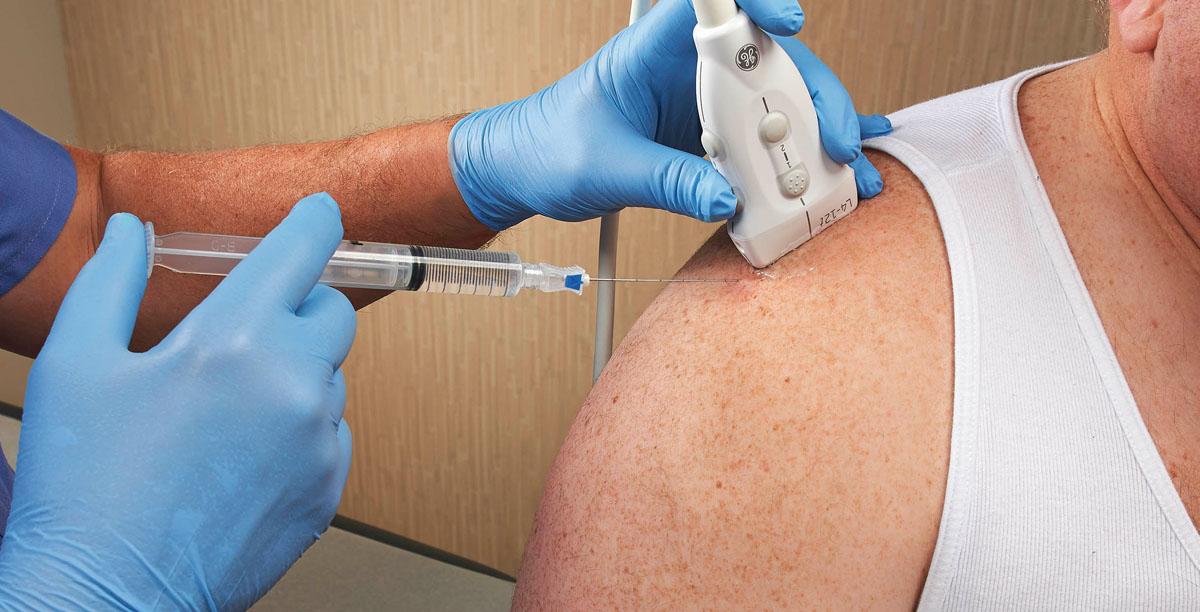
Image Source- Google
Ultrasound-guided injections have become an essential skill for healthcare professionals in various fields such as orthopedics, sports medicine, and pain management. Mastering this technique can greatly improve the accuracy and efficacy of injections, leading to better patient outcomes.
This advanced ultrasound injection course guide aims to provide an overview of ultrasound-guided injections, along with tips and techniques to help you master this valuable skill.
The Importance of Ultrasound-Guided Injections
Ultrasound-guided injections offer several advantages over traditional blind injections, including:
- Improved accuracy: Visualization of the needle tip and surrounding structures helps ensure precise placement of the injection.
- Enhanced safety: Real-time imaging allows for avoidance of critical structures such as nerves and blood vessels, reducing the risk of complications.
- Increased efficacy: Direct visualization can lead to better targeting of the intended site, maximizing the therapeutic effects of the injection.
- Reduced discomfort: By delivering the medication to the exact location of pathology, patients may experience less pain during and after the procedure.
Key Components of Ultrasound-Guided Injections
Equipment
Essential equipment for ultrasound-guided injections includes:
- Ultrasound machine with a high-frequency linear transducer for superficial structures
- Clean ultrasound gel for acoustic coupling
- Sterile drapes, gloves, and probes to maintain aseptic technique
- Needles and syringes of appropriate size for the procedure
- Local anesthetic and/or corticosteroid for the injection
Technique
Mastering the technique of ultrasound-guided injections involves the following steps:
- Identifying the target structure: Use ultrasound imaging to locate the target structure and plan the trajectory of the needle.
- Preparing the patient: Position the patient comfortably and mark the injection site while maintaining sterility.
- Guiding the needle: Advance the needle under real-time ultrasound guidance, ensuring steady movement and correct positioning.
- Confirming placement: Verify the needle tip location with ultrasound to ensure accurate delivery of the injection.
- Injecting the medication: Slowly inject the medication while monitoring for any signs of unintended spread or complications.
Tips for Mastering Ultrasound-Guided Injections
Here are some tips to help you improve your skills in performing ultrasound-guided injections:
- Practice makes perfect: Regular practice on simulation models and real patients can help you gain confidence and proficiency.
- Attend training courses: Enroll in comprehensive courses that offer hands-on experience and expert guidance on ultrasound-guided injections.
- Solicit feedback: Seek feedback from experienced practitioners to identify areas for improvement and refinement of your technique.
- Stay updated: Stay informed about the latest advances in ultrasound technology and injection techniques through continuing education and literature reviews.
Common Applications of Ultrasound-Guided Injections
Ultrasound-guided injections are used in a variety of clinical settings to treat conditions such as:
- Joint inflammation (arthritis, bursitis)
- Tendonitis (rotator cuff, Achilles tendon)
- Nerve entrapment (carpal tunnel syndrome, sciatica)
- Soft tissue injuries (muscle tears, ligament strains)
- Chronic pain conditions (low back pain, neck pain)
Benefits of Ultrasound-Guided Injections in Pain Management
In the field of pain management, ultrasound-guided injections offer unique benefits, including:
- Targeted delivery: Precise targeting of the affected nerve or tissue can result in improved pain relief.
- Reduced side effects: By avoiding systemic circulation, lower doses of medication can be used, minimizing potential side effects.
- Repeatable accuracy: The ability to visualize the needle tip allows for consistent and accurate placement of injections during repeat procedures.
- Patient comfort: Minimally invasive injections under ultrasound guidance can enhance patient comfort and satisfaction with the procedure.
Conclusion
Mastering ultrasound-guided injections is a valuable skill that can benefit both patients and healthcare providers. By understanding the importance of this technique, familiarizing yourself with the key components and techniques involved, and implementing tips for improvement, you can enhance your proficiency in performing ultrasound-guided injections. Whether you are a novice or an experienced practitioner, continuous learning and practice are essential for mastering this invaluable skill.
